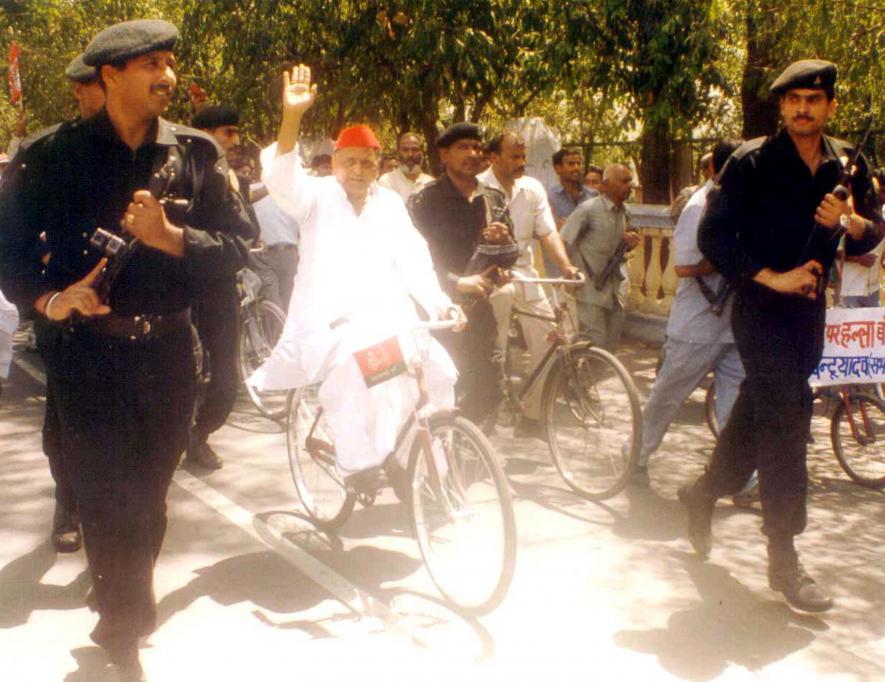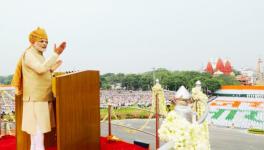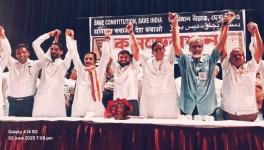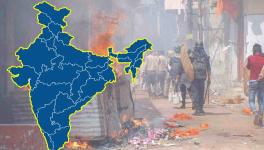Mulayam Singh Yadav’s Legacy and the Challenge Before Socialist Parties

Lucknow: In this Wednesday, April 23, 2003 file photo, Samajwadi Party Chief Mulayam Singh Yadav leads his party's cycle rally in Lucknow. Yadav passed away at the age of 82, on Monday, Oct. 10, 2022. He was under treatment at Gurugram's Medanta hospital. (PTI Photo)
Mulayam Singh Yadav’s death is a colossal loss for the socialist firmament, not just his family, friends, or the party he founded. Let me recall through an incident why he was the greatest of the surviving socialists. In 1997, immediately after Lalu Prasad Yadav was sent to jail in the fodder scam cases for the first time, Mulayam showed up at Patna. Mulayam and Lalu had differences at the time. They were not friends, for Lalu had supported Deve Gowda’s becoming Prime Minister, a position Mulayam had desired. Still, in Patna, Mulayam immediately announced a public rally at the Gandhi Maidan. There, before a massive crowd, he declared, “Gareebon ki aatma jail me band hai—the soul of the impoverished has been thrown into prison.” At the press conference soon after, I asked Mulayam why he had come out in support of Lalu despite their past differences. He responded, “In a flood, snakes and human beings alike climb onto the same boat for safety—it is useless to talk about differences right now.”
Of course, in recent years, Mulayam and Lalu became friends. Both their parties will suffer from the demise of Mulayam—and it will have repercussions in Uttar Pradesh and Bihar. Sure, he had been unwell, but for Mulayam, the question of being politically “active” or “inactive” did not arise. He cannot be viewed as just an individual—he laid the foundations of the Samajwadi Party and it remains the main challenger to the Bharatiya Janata Party in Uttar Pradesh. In that sense, Mulayam’s contribution will be enduring, for the foundations of socialism survive him.
In recent decades, we have witnessed a multitude of changes in the social and individual lives of Indians. Capitalism and technology have marched into prominence, but the basic formula of one plus one equals two will never change. The soul of socialist politics will remain, even while adapting to the new social context under the new generation of leaders. Young Mulayam, Chaudhary Charan Singh once said, was a “Napoleon Bonaparte” for how he marshalled his resources and people to build his party. Youthful Mulayam was just one of millions of followers of Ram Manohar Lohia, but he alone became Lohia’s natural successor.
The challenge for the Samajwadi Party is how it will carry forward this legacy.
Mulayam brought into the framework of socialist politics the idea of fighting caste discrimination. He famously said, “Pichade paavein 100 me 60—the backwards will get 60 per cent of the country’s resources.” When the marginalised and excluded joined him, the feudal forces reacted, calling those who demanded justice casteist—so we heard Mayawati accused of being “discriminatory,” or Mulayam called “Maulana Mulayam”.
These are just a continuation of the challenges people like Mulayam faced in their initial days. First, his biggest challenge was overcoming the elitism of the Congress party, which was in power and led by Indira Gandhi. He pushed anti-Congressism forward and constantly encountered challenges from elite landlordism and feudal oppression of the weaker sections. After the nineties, his second challenge came. All parties representing weaker sections started fighting the rise of the BJP and RSS. Here, too, Mulayam showed the way.
Around 1992, when the entire north was engulfed in a communal atmosphere, he forged the Samajwadi Party-BSP alliance with Kanshi Ram leading the Bahujan Samaj Party. He demonstrated that weaker sections could defeat the BJP and RSS, a phenomenal achievement. That is how, today, the doors could open for the alliance between Nitish Kumar and Lalu.
In 1990, after Lalu arrested Advani (then on the divisive ‘rath yatra’ across the hinterland), the VP Singh government was in power at the Centre, with support from various parties, including the BJP. Advani’s arrest had the BJP withdraw support from VP Singh, so his government fell. However, the loss of the BJP was compensated by the support of the Congress party to Chandra Shekhar. At the time, Mulayam stayed with Chandra Shekhar. Soon, Assembly elections were held in Uttar Pradesh, in which Kanshi Ram and Mulayam joined hands to form a government that kept the BJP at bay. Indeed, in his younger days, Mulayam had joined Chandra Shekhar’s Samajwadi Janata Party or SJP. He also never fielded a candidate against Chandra Shekhar in Ballia. Remember that VP Singh came from the Congress family, but the others—Mulayam, Chandra Shekhar, Lalu—were or are socialists who struggled and led movements on the ground all their lives.
To this day, contesting the BJP’s hegemony is the central plank of these parties. Now they must fight a two-front battle—against feudalism and communal forces.
No doubt, at one point, Amar Singh joined the Samajwadi Party and brought it closer to the corporate and the film world. While Mulayam oversaw a party perceived to be connected to people at the grassroots, Amar Singh had film and corporate connections, which he provided to Mulayam. But then Amar Singh was no Azam Khan with his ear to the ground. Perhaps he was seeking acceptance in Lutyens’ Delhi. Still, we saw that when Akhilesh Yadav came to power, he did away with those who were with Amar Singh.
Indeed, Mulayam was not a glib talker like Lalu. Decoding his speeches was often a big challenge for journalists. We cannot compare the two in public speaking, but Mulayam was more remarkable in his sensitivity towards socialism. In 1967, he became an MLA. Mulayam faced more challenges than other socialist leaders, for he had started earlier. The opener faces the ball’s fury in cricket but makes things easier for the middle order. In the same way, Mulayam paved the way for all leaders who followed.
Lalu is here, and engaged in politics, and the movement of deprived sections continues under younger people in Bihar and elsewhere. Has the conflict between the powerful and the weak ended? It has not. Therefore, campaigns for the vulnerable groups will also continue. It’s important to remember that the challenges such movements face today are not new. Like Mulayam in his time, whoever is young today must face these challenges, and steer, like the older generation, their parties out of the stormy weather. From hopelessness, hope arises. The sun always rises to quell the darkness. Today is a time for despair, but the younger must learn to carry their movement forward.
One does not become cynical or weary when there is conflict, or a pushback. The road becomes the destination, and the fact that you are fighting becomes your victory. As Lohia said, “Jab sadkein sooni hon, Sansad awaara ho jaati hai—when mass mobilisations weaken, the ruling classes start oppressing people.”
Mulayam never let his struggles die. His inheritors have to gird their loins and carry his work forward. The deprived and minorities will need to vent their ire at how they are being suppressed. These parties will again have to become the destination for the oppressed, weak and marginalised across the country.
The author is a journalist, writer and teacher. The views are personal.
Get the latest reports & analysis with people's perspective on Protests, movements & deep analytical videos, discussions of the current affairs in your Telegram app. Subscribe to NewsClick's Telegram channel & get Real-Time updates on stories, as they get published on our website.
























